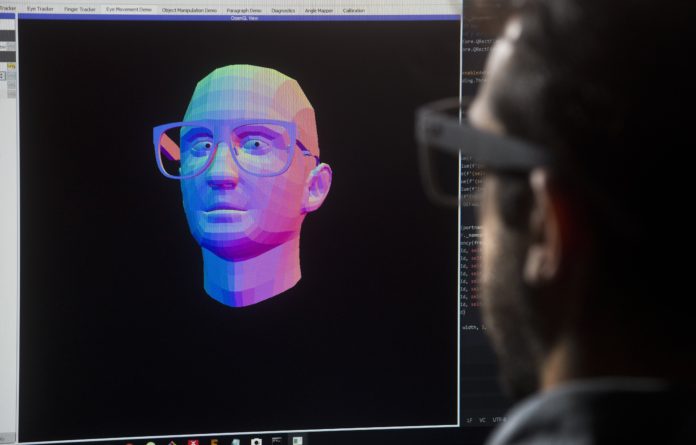
A short two years after being founded, Kitchener startup Adhawk Microsystems has exceeded U.S.$4 million in commercial and venture-based funding.
Boasting the first ever non-camera reliant eye-tracking technology, the group is now backed by technology mogul Intel and Montreal-based Brightspark Ventures.
Adhawk Microsystems is ded by Neil Sarkar,a PhD fellow at the University of Waterloo Institute for Nanotechnology. Having first taken root as a University of Waterloo research project, the team now features numerous past and current students alike.
Possessing a ground-breaking computer chip, the design and development of which was led by Sarkar himself, Adhawk Microsystem’s technology is capable of detecting movements smaller than one-billionth of a metre.
The secret to the technology’s effectiveness is a miniscule light-emitting diode which, attached directly to the glasses, emits infrared light. Invisible to the human eye, it is the same technology used in the facial recognition processes of Apple.
From these diodes, the light is shone across each eye. Mounted on the other side of the frame is a small photo sensor, which receives reflections off the cornea and tracks changes in the movement of the eye.
“And that is happening thousands of times a second,” Sarkar said.
Beyond tracking real-time movements, the micro-electromechanical systems (MEMs) that power the glasses are able to accurately predict a user’s eye movement as much as 50 milliseconds into the future.
However well-executed, the concept behind eye-tracking technology is far from unique.
The advantage which the group maintains over competitors is in the configuration and execution of the apparatus itself, which the group says is “smaller, lighter, faster, and more energy efficient” than alternatives.
“What we have found is that state-of-the-art eye-tracking technology today has not made it into any headsets because of size and power consumption,” Sarkar said.“We are hoping our eye-tracker makes it in.”
In doing so, the interface that the technology is connected to will thus be able to load content which users will interact with in advance.
Applications for the technology range from recreational to medical, and with time, could be integrated into both. Possible avenues which the group has discussed already include injury diagnosis, emotional identification and tracking, error-prevention in highly technical professions, and of course, seamless integration into endless existing technologies.
Having first taken root as a University of Waterloo research project, the team now features numerous past and current students alike.































